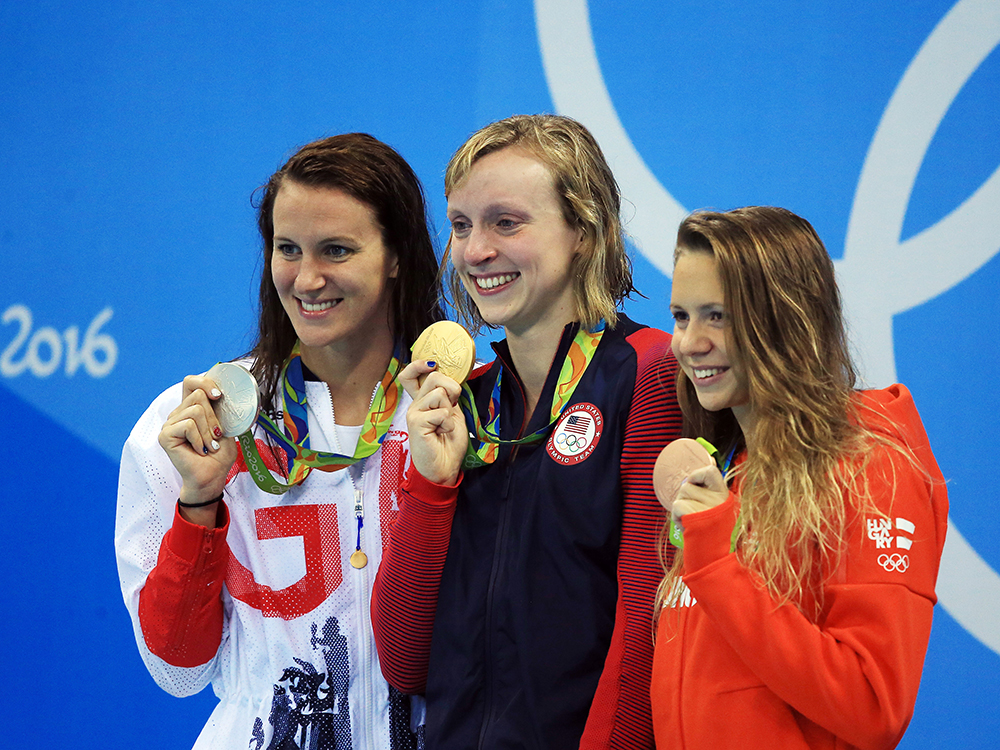Women athletes can still be banned from the Olympics for this reason
Not OK

Not OK
In something that feels like it probably should have ended five decades ago when we came to recognize that gender binaries simply aren’t realistic for everyone, this totally baffling news will set your feminist heart on fire. Basically, up until last year, women athletes were banned from the Olympics for having higher testosterone levels than is considered 'normal.'
It’s totally WTF, but it’s also totally true. BuzzFeed News investigated, and the results are probably the most frustrating thing ever. Until last year, all women in the Olympics were forced to undergo a T-test. The testosterone testing was meant to ensure that 'normal' women weren't having to compete against 'abnormal' ones. Ugh.
The test was required by the International Association of Athletics Federations and the International Olympics Committee to ensure that women with higher testosterone levels didn’t have an “unfair advantage” against other women with 'normal' levels of testosterone. If they did, they’d have to either compete against the guys or have their hormones 'fixed.' It’s invasive and just totally uncool, and it doesn’t exactly make sense.
But sprinter Dutee Chand fought to have the T-test overturned. Upon her win, the court ruled that 'although athletics events are divided into discrete male and female categories, sex in humans is not simply binary.' TG for Duttee Chand and her bravery for encouraging us to think a little harder about the way we think about gender, strength, and power.
Times have changed, but only slightly. In the Olympic history, prior to the T-test, women athletes were inspected to make sure they were 'anatomically female' (which is messed up AF) and had cheek swabs for genetic tests.
It’s messy as hell because no one knows what it means to be male or female. Though many of us grew up with the idea that men look, behave, and are one way and women are another, it simply isn’t true. Everything from genitals to hormones to gender identity are fluid and depend so much on the individual that it isn’t realistic to expect everyone to fit a single mold. As Susan Cahn, a his tory professor at the University at Buffalo and author of Coming on Strong: Gender and Sexuality in 20th Century Women’s Sports, told BuzzFeed News, 'Is it genitalia? Is it chromosomes? Is it hormones?' It’s just more complicated than 'anatomically female.'
Celebrity news, beauty, fashion advice, and fascinating features, delivered straight to your inbox!
Despite some progress, things remain imperfect. Remember Chand? Well, the court is still pushing to have some sort of gender test implemented. 'Nevertheless,' the court said during her fight to get T-tests removed, 'it is necessary for the IAAF to formulate a basis for the division of athletes into the male and female categories.'
Essentially, they still believe that splitting the Olympics by gender is the best way to handle things, but they just haven’t figured out a way to go about it. All we know is that this has real impact on these athletes, and on the future of our Olympics.
From the editors of HelloGiggles
The leading destination for fashion, beauty, shopping and finger-on-the-pulse views on the latest issues. Marie Claire's travel content helps you delight in discovering new destinations around the globe, offering a unique – and sometimes unchartered – travel experience. From new hotel openings to the destinations tipped to take over our travel calendars, this iconic name has it covered.